Chun Hu
Chirp Delay-Doppler Domain Modulation: A New Paradigm of Integrated Sensing and Communication for Autonomous Vehicles
May 22, 2025Abstract:Autonomous driving is reshaping the way humans travel, with millimeter wave (mmWave) radar playing a crucial role in this transformation to enabe vehicle-to-everything (V2X). Although chirp is widely used in mmWave radar systems for its strong sensing capabilities, the lack of integrated communication functions in existing systems may limit further advancement of autonomous driving. In light of this, we first design ``dedicated chirps" tailored for sensing chirp signals in the environment, facilitating the identification of idle time-frequency resources. Based on these dedicated chirps, we propose a chirp-division multiple access (Chirp-DMA) scheme, enabling multiple pairs of mmWave radar transceivers to perform integrated sensing and communication (ISAC) without interference. Subsequently, we propose two chirp-based delay-Doppler domain modulation schemes that enable each pair of mmWave radar transceivers to simultaneously sense and communicate within their respective time-frequency resource blocks. The modulation schemes are based on different multiple-input multiple-output (MIMO) radar schemes: the time division multiplexing (TDM)-based scheme offers higher communication rates, while the Doppler division multiplexing (DDM)-based scheme is suitable for working in a lower signal-to-noise ratio range. We then validate the effectiveness of the proposed DDM-based scheme through simulations. Finally, we present some challenges and issues that need to be addressed to advance ISAC in V2X for better autonomous driving. Simulation codes are provided to reproduce the results in this paper: \href{https://github.com/LiZhuoRan0/2025-IEEE-Network-ChirpDelayDopplerModulationISAC}{https://github.com/LiZhuoRan0}.
Near-Space Communications: The Last Piece of 6G Space-Air-Ground-Sea Integrated Network Puzzle
Dec 30, 2023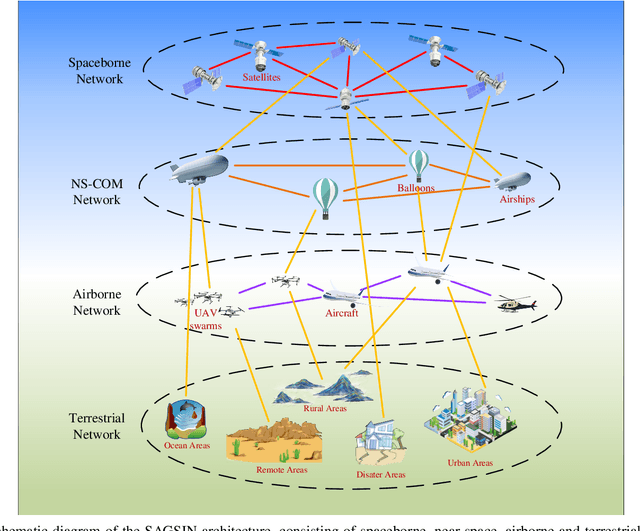
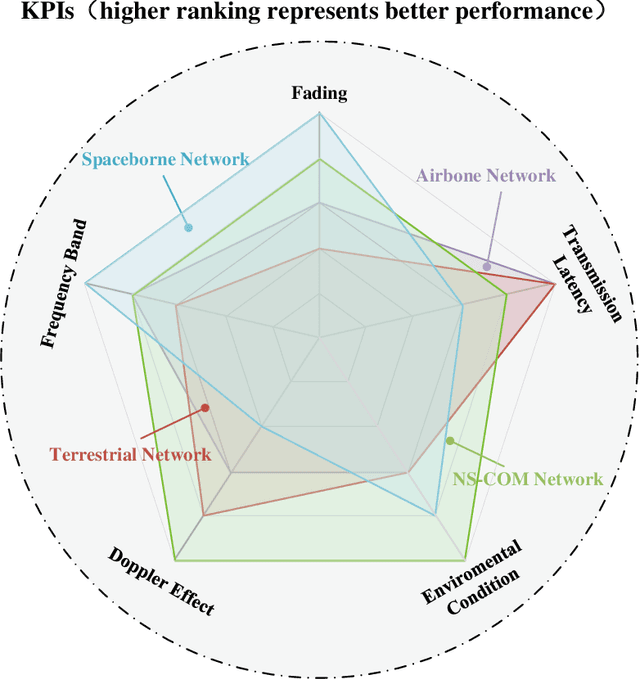
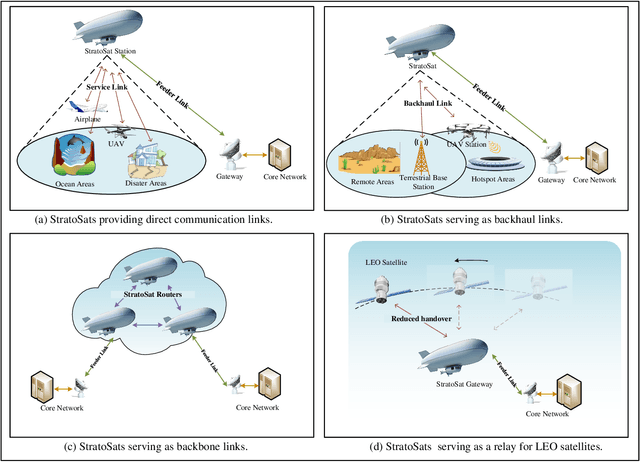
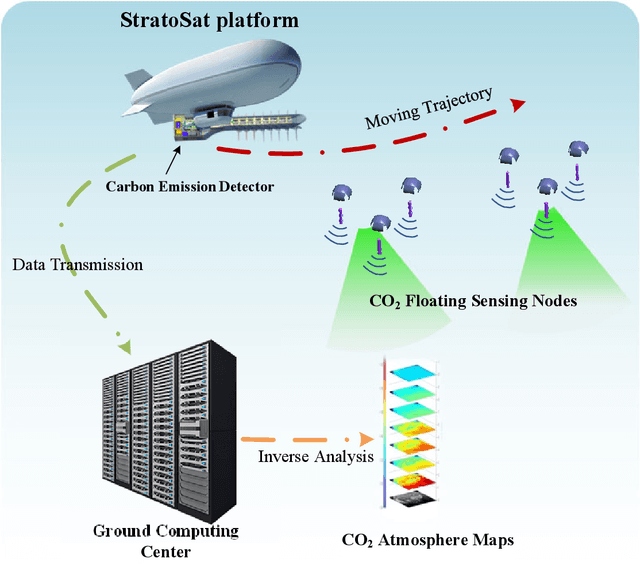
Abstract:This article presents a comprehensive study on the emerging near-space communications (NS-COM) within the context of space-air-ground-sea integrated network (SAGSIN). Specifically, we firstly explore the recent technical developments of NS-COM, followed by the discussions about motivations behind integrating NS-COM into SAGSIN. To further demonstrate the necessity of NS-COM, a comparative analysis between the NS-COM network and other counterparts in SAGSIN is conducted, covering aspects of deployment, coverage and channel characteristics. Afterwards, the technical aspects of NS-COM, including channel modeling, random access, channel estimation, array-based beam management and joint network optimization, are examined in detail. Furthermore, we explore the potential applications of NS-COM, such as structural expansion in SAGSIN communications, remote and urgent communications, weather monitoring and carbon neutrality. Finally, some promising research avenues are identified, including near-space-ground direct links, reconfigurable multiple input multiple output (MIMO) array, federated learning assisted NS-COM, maritime communication and free space optical (FSO) communication. Overall, this paper highlights that the NS-COM plays an indispensable role in the SAGSIN puzzle, providing substantial performance and coverage enhancement to the traditional SAGSIN architecture.
Data-Driven Deep Learning Based Hybrid Beamforming for Aerial Massive MIMO-OFDM Systems with Implicit CSI
Feb 10, 2022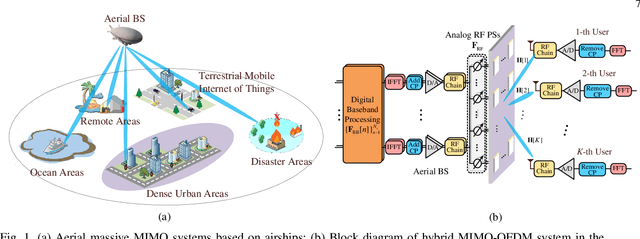

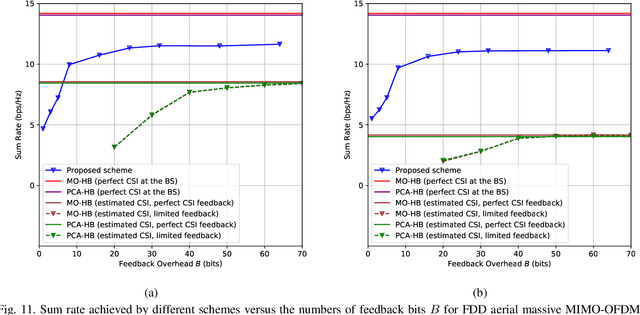

Abstract:In an aerial hybrid massive multiple-input multiple-output (MIMO) and orthogonal frequency division multiplexing (OFDM) system, how to design a spectral-efficient broadband multi-user hybrid beamforming with a limited pilot and feedback overhead is challenging. To this end, by modeling the key transmission modules as an end-to-end (E2E) neural network, this paper proposes a data-driven deep learning (DL)-based unified hybrid beamforming framework for both the time division duplex (TDD) and frequency division duplex (FDD) systems with implicit channel state information (CSI). For TDD systems, the proposed DL-based approach jointly models the uplink pilot combining and downlink hybrid beamforming modules as an E2E neural network. While for FDD systems, we jointly model the downlink pilot transmission, uplink CSI feedback, and downlink hybrid beamforming modules as an E2E neural network. Different from conventional approaches separately processing different modules, the proposed solution simultaneously optimizes all modules with the sum rate as the optimization object. Therefore, by perceiving the inherent property of air-to-ground massive MIMO-OFDM channel samples, the DL-based E2E neural network can establish the mapping function from the channel to the beamformer, so that the explicit channel reconstruction can be avoided with reduced pilot and feedback overhead. Besides, practical low-resolution phase shifters (PSs) introduce the quantization constraint, leading to the intractable gradient backpropagation when training the neural network. To mitigate the performance loss caused by the phase quantization error, we adopt the transfer learning strategy to further fine-tune the E2E neural network based on a pre-trained network that assumes the ideal infinite-resolution PSs. Numerical results show that our DL-based schemes have considerable advantages over state-of-the-art schemes.
 Add to Chrome
Add to Chrome Add to Firefox
Add to Firefox Add to Edge
Add to Edge